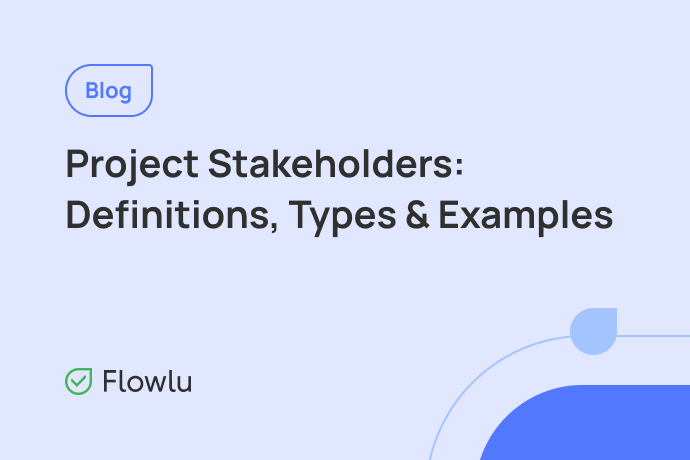How to Write a Winning Workflow Process in 2025
Planning the workflow process enables businesses to operate more efficiently. It is the foundation of all tasks. It saves time, improves efficiency, prevents potential problems from occurring, and develops strategies for meeting large goals on time.
What Do You Mean by Workflow?
A workflow is a comprehensive process that assists teams in achieving their objectives by connecting the appropriate people to the data when it is necessary throughout the project implementation. It includes a description of all the tasks and processes required to achieve a specific goal.
It aids in the organization of information in a way that is not only understandable but also reproducible when needed. The workflow usually consists of three stages that can be conditionally divided into seven steps.
Planning:
- Idea generation and data collection;
- Receiving requests;
- Setting priorities and allocating resources.
Execution:
- Research and analysis;
- Keeping track of progress.
Analysis:
- Coordination;
- Reporting.
How Do You Write a Workflow Process?
Writing an ideal workflow is a complex process that includes numerous sub-steps and requires both time and effort. However, the following tips will make it much easier for you to develop it.
1. General Discussion
Project discussion is a necessary part that is frequently overlooked. It entails posing questions to the team members and assessing the available resources. You can highlight any dependencies that may arise within a project here, as well as clarify whether any point appears to be complicated to the team. Ensure that everyone understands the goals, and the tools required to achieve them.
2. Determine the Outcomes
Before you begin planning the workflow process for a project, make a list of the project’s outcomes, i.e., specify what job or task you are creating a workflow for. For example, you have decided to launch a new clothing line. The project’s outcomes will then include some of the following:
- Development of a document containing clothing specifications;
- Clothing prototype development;
- Press release;
- New clothing packaging.
When working on this step, keep in mind that it does not include the activities required to produce the outcomes.
3. Specify Processes
Every outcome is the result of a specific action or process. For example, to create a press release, you may need to do the following:
- Obtaining quotes from top management;
- Creating the press release content;
- Obtaining approval from the legal department;
- Obtaining approval from top management
- Distribution of press releases to media sources.
This step is critical because it includes the description of all processes needed to achieve each outcome. It outlines all the actions that must be taken before the project can be completed effectively. You may also notice specific dependencies as you describe the workflow processes.
For example, to create a press release, you will need a photo of the new item and an appealing description. Writing catchy text is not for everyone. Fortunately, there are numerous paper writing service reviews websites to assist you. All dependencies must be considered and reflected in the visual workflow.
4. Assign Responsibilities
After you have determined the outcomes and the processes required to achieve them, it is time to assign roles. There may be multiple departments and teams performing specific tasks for a given sub-step. Assigning responsibilities allows you to ensure that you are familiar with all project participants.
5. Indicate the Timing
After you’ve determined your goals, processes, and key players, it’s time to consider the “how.” It entails defining the project’s timeline and determining the length of each pre-step.
6. Building Diagrams
Once you have determined the number of processes required to achieve the project’s outcomes, you will have the information you need to create a visual flowchart. It provides everyone with a quick understanding of your entire project at a glance.
As a result, both your top management and legal department employees will be able to see what should be done, when it should happen, and who will be held accountable.
7. Go Smart
You can use one of the workflow management tools to keep everyone engaged and automate the workflow. They will enable every team to track the progress of tasks and determine when action is required.
There are numerous tools to choose from. Here are some of the best ones:
- Flowlu;
- Hive;
- Kissflow;
- Monday.com;
- Smartsheet.
Conclusion
It is not difficult to document a workflow process, but it requires attention to detail and good organizational skills. Do not be discouraged if you encounter difficulties; instead, focus on the opportunities they bring. You should also always revise your workflows to make changes that will increase the quality of the project.
See also: Workflow VS Process: Differences And Similarities
A workflow process is a sequence of operations that convert resources into products or services. Efficient planning of workflow processes is crucial for a company's success as it saves time, improves efficiency, prevents potential problems, and helps in meeting large goals on time.
A workflow is a comprehensive process that outlines all tasks and processes required to achieve a specific goal. It typically consists of three stages: planning, execution, and analysis, which can be further divided into seven steps including idea generation, research, coordination, and reporting.
To write a successful workflow process, follow these steps:
- General Discussion.
- Determine Outcomes.
- Specify Processes:
- Assign Responsibilities.
- Indicate Timing.
- Build Diagrams.
- Use Workflow Management Tools.
Remember, writing a workflow process requires attention to detail and organizational skills. Don't hesitate to seek help or use tools to streamline the process and enhance efficiency.











